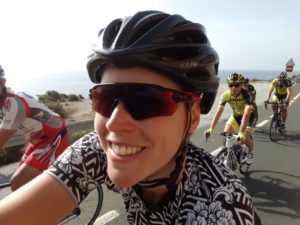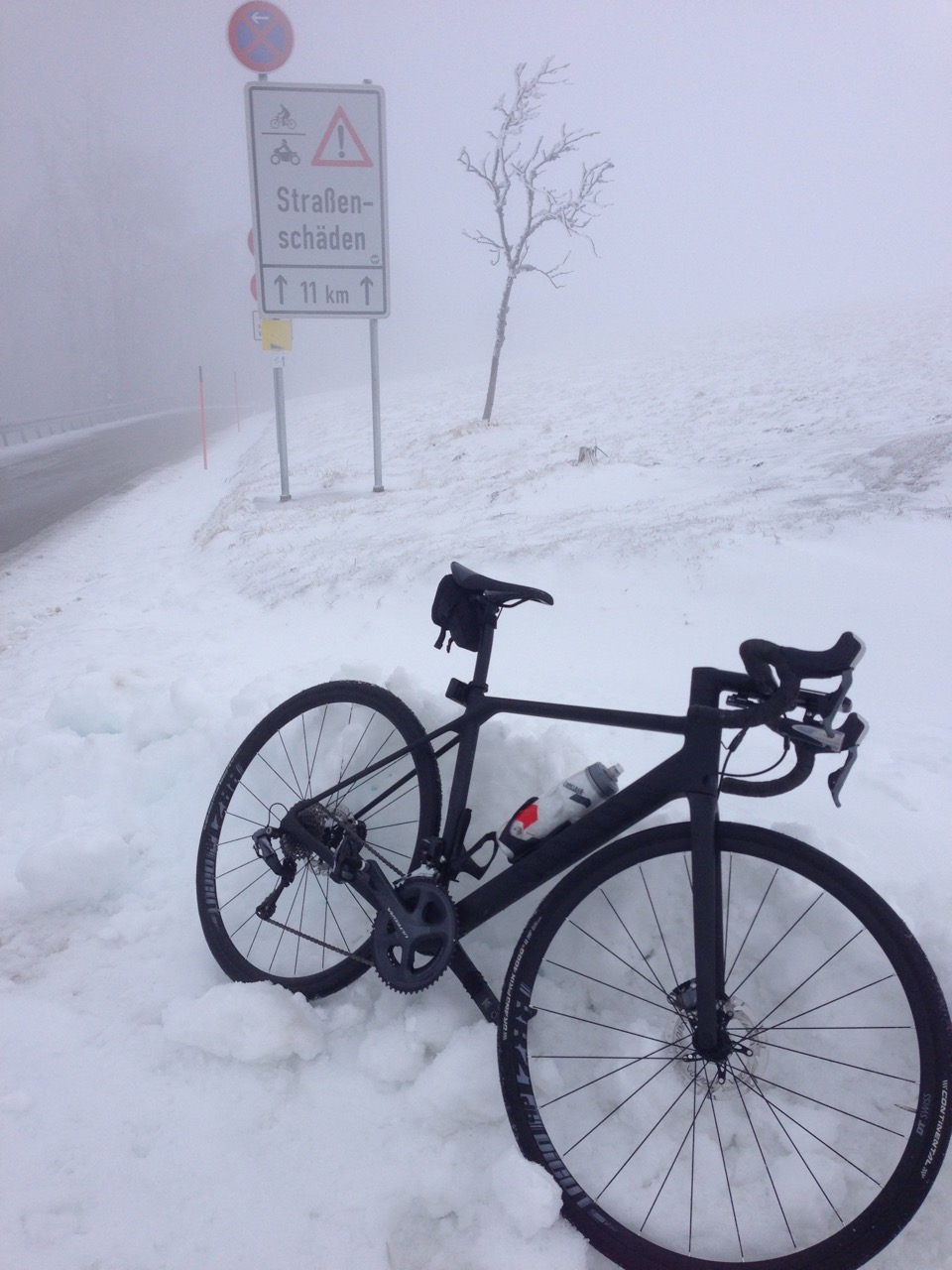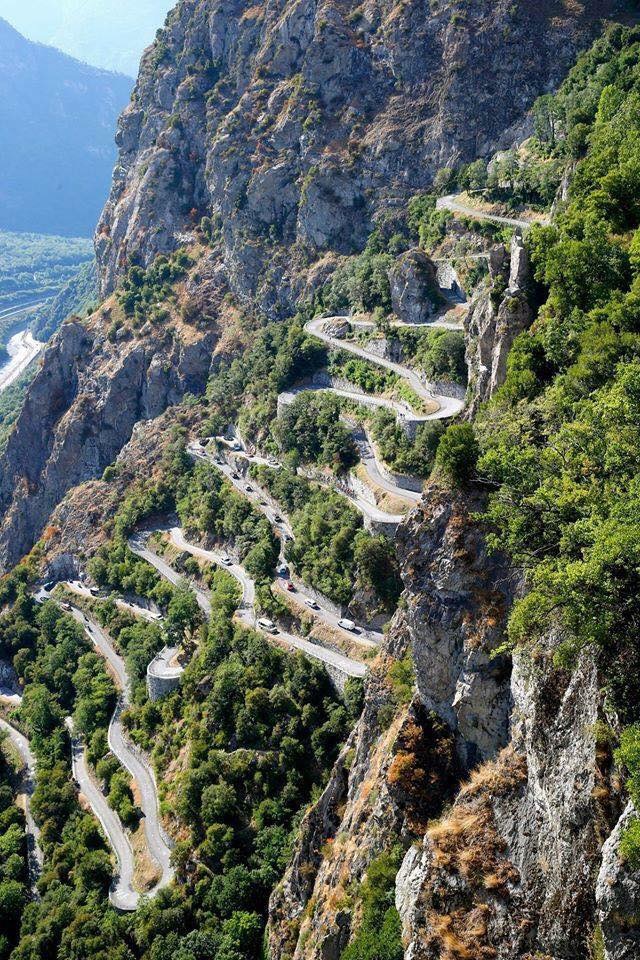
By Dr. Coleman Patterson
Director of Leadership Studies, Professor of Management and Leadership
Hardin-Simmons University, Abilene, Texas
After three previous rides across Texas and one from Mexico to Canada, a new crop of students in the Leadership Studies Program at Hardin-Simmons University decided to tackle another long-distance ride this year from Mexico to Canada. Training and early planning began in the Fall 2016 semester, but things really picked up momentum in the Spring 2017 semester.
The planning, organization, and execution of the ride gives Leadership Studies students the opportunity to work together to bring a real and complex project to life. Rather than trying to learn about the principles and skills of leadership and teamwork in traditional ways (e.g., lectures, textbooks, videos, etc.), the bike ride projects provide students with opportunities to develop skills and understanding by experiencing the concepts that they study in class through working together to complete a real project.
This year’s project was the fifth annual ride and like the others, presented student leaders with many types of organizational issues to forecast, address, and resolve. All five previous rides have proved themselves to be exceptional learning experiences and also ones that foster a spirit of adventure and camaraderie and which provide participants with life-long memories and a profound sense of achievement.
Our 2014 ride was from Brownsville, Texas to Liberal, Kansas. The 925-mile route was mostly up U.S. Route 83. Upon completion of that ride, we discovered that the completed route was slightly more than half of the distance from Brownsville to Canada. The seeds for a future Mexico-to-Canada ride up U.S. Route 83 were planted with that discovery. After our 2016 ride from Del Rio, Texas to Grand Portage, Minnesota, a new group of student cyclists began meeting throughout the school year to plan and prepare for this summer’s ride. To avoid the congestion and busyness of U.S. Route 83 between Brownsville and Laredo, the team decided to start cycling in Eagle Pass and merge onto U.S. Route 83 at La Pryor, Texas.

One of our team members was part of the 2015 team that rode from Surfside Beach to Texline. The other six student members were mostly newbies to road cycling when the school year began. As the final team of cyclists took shape, we added to our fleet of bicycles and fitted riders in SPD shoes and pedals. Training rides on the outskirts of Abilene helped students learn how feel comfortable on their bikes and develop proper cycling technique. Students also learned basic bicycle maintenance and how to change tires. As the time for the ride to Canada approached, the team made weekend rides to Ballinger, Cross Plains, Albany, and other nearby cities. The team also rode in the LBJ100 ride around Stonewall, Texas.
As with our previous rides across Texas and to Canada, students would take turns each day serving as “road captains.” As road captains, the students would study weather, road conditions, elevation and winds, distances, and team health to determine the rules of the road for each day. The team was divided into two groups of cyclists who were split into two vehicles—each of which carried a four-bike rack. Each day, the road captain would determine times to wake up and get ready, whether the team would ride together or take turns, and decide on the distances each group would ride before taking breaks—typically 10-15 miles, depending on winds and hills. Within each vehicle, team members would take turns driving the support vehicle and riding bikes.

As the ride approached, student work teams finalized plans for lodging with churches along the route, contacted media in our overnight locations, appeared on local news programs, and raised money through family, friends, and businesses. With training behind them and lodging, media, and finances lined up, the team drove from campus to the border on May 25, 2017 to begin the ride in Eagle Pass. A reporter from the Eagle Pass newspaper interviewed team members and took pictures for a news story about the ride.

First Baptist Church in Uvalde, Texas hosted us on the opening night of the ride. A hearty dinner at a Mexican restaurant and a visit the HEB had us ready to drive to Eagle Pass on the following morning to begin the ride from the border town. Cloudy skies and pleasant temperatures greeted us on the first morning of cycling. After the first few hours on bikes, the team had made it through a border checkpoint and intersected U.S. Route 83 at La Pryor, Texas. From there, we turned north for another 1,550 miles to Canada. Heat, humidity, and hills met us on the afternoon ride into Leakey, Texas for the night. Leakey United Methodist Church hosted and fed us on our first layover after getting on the bikes.

Our second day of cycling began with a long and challenging uphill ride out of Leakey (if you’ve driven that section of road, you know the hill). More hills and afternoon heat continued throughout the day as we rolled to First Baptist Church in Eden, Texas for the night. A mid-afternoon meal, showers, and comfortable couches in the youth room waited for us upon our arrival. An additional dinner at Dairy Queen and a visit to the Garden of Eden rounded out a second long day on bicycles. A reporter from the CBS affiliate in San Angelo met with us in Eden for a news story on the ride.

A decent headwind met us on the ride from Eden to Abilene. In the first three days, we had encountered heat, humidity, hills, and headwinds. While not the most desirable ways to begin the long ride to Canada, successfully powering through those challenges built confidence in the cyclists. Cyclists arrived back into Abilene on the Sunday afternoon before Memorial Day. A Memorial Day rest break had the team ready to head north out of Abilene. Once again, gracious and generous hosts awaited us at the First Baptist Churches in Paducah and Wheeler. Showers, food, fun conversation, and places to spread out our sleeping bags for the nights were welcomed ways to end our days.

One week after we first left Abilene to drive to our starting point at the border, we finally left Texas and briefly rode across the panhandle of Oklahoma before heading into Kansas and to our hosts at First Baptist Church of Liberal. A meeting with a newspaper reporter, dinner at a local restaurant, time to relax in the church’s family life center, and breakfast at a Liberal donut shop on “National Donut Day” had us ready to continue toward the mid-point of the ride. The heaviest highway traffic of the ride went with us out of Liberal to Garden City.

Not finding a church to host us in Scott City, Kansas, we spent the night in a hotel. After driving to Monument Rocks for sightseeing with our racked bicycles at the end of the day, we ended up with very dusty bicycles. An outside water pump and hose at the hotel permitted us to clean up the bicycles a little before heading out on the road the following day.

As we headed out from Scott City to the border with Nebraska, we encountered some anticipated narrow shoulders on U.S. Route 83. And even though we had the comfort of a safety vehicle behind the cyclists, we decided that some of the roads were not safe enough to ride on. Busy two-lane roads with narrow shoulders and insufficient room for safety vehicles to follow along behind the bicycles made us rethink our plans and skip a few stretches of the road. Once the shoulders widened and were safe to ride, we got back out on the road.
St. Patrick Catholic Church and School welcomed us to McCook, Nebraska. Father Gary, an avid cyclist, helped us clean our chains and gave us news about the roads to North Platte and Thedford. Cleaning our bikes was a really good idea and the news of good highway shoulders to our next night’s destination in Thedford was really good news. While in McCook, we visited a local grocery store, celebrated the birthday of one of our cyclists, and enjoyed a magnificent dinner at Fuller’s Family Restaurant. If ever in McCook, go visit Fuller’s for a huge meal at a reasonable price and marvel at their collection of cookie jars.

Thedford, Nebraska had been on our radar for a long time. It was our second scheduled rest day and one that held an eagerly anticipated adventure. Our hosts for the night were people that we met through the “Fans of U.S. Route 83” Facebook group. Stew Magnuson, the originated and administrator of the group, is the author of the three-book series entitled “The Last American Highway” about the towns and history along U.S. Route 83. Early in our planning for the ride, we made contact with Stew and told him about our plans. He helped us promote our ride through his Facebook group. From the announcement on the Facebook group, we made contact with Ann Manning-Warren and Tom and Twyla Witt. They arranged for us to stay at the Middle Loup River Ranch Guest House outside of Thedford. Ann, Tom, and Twyla went above the call of duty with food and lodging for us for two nights!

On our rest day in Thedford, we drove to Mullen, Nebraska for a morning of “tanking’ on the Middle Loup River. Tanking involves sitting in a large, metal, cattle watering tub and floating down the river. We had been told about the tanking tradition and found YouTube videos of the actual experience—it was something that we had been looking forward to since the early days of planning the ride.
On the morning after our rest day, we woke up to cloudy skies and a brief rain shower as we loaded the vehicles. We were on bikes and heading toward South Dakota by 7 a.m. After brief stop to meet with Ann Manning-Warren, our host in Thedford, we continued rolling north. We had planned to ride to about 100 miles to Mission, South Dakota and drive back to Valentine, Nebraska for the night (that night was the only night where we didn’t have lodging secured for the team). As we rolled into Valentine shortly before noon, a light and steady rain began to fall. The rain was heavy enough to make the shoulders of the road slick and to get the bikes and riders dirty from spray. As we came into Valentine for gasoline, we decided to take off the remainder of the day and explore Valentine—we had already planned to spend the night in Valentine. The staff at the Niobrara Lodge was extremely helpful, gave us a good deal on rooms, and allowed us to check in immediately. For the rest of the day, we enjoyed strolling through Valentine, visiting shops, hiking to a waterfall, and crossing the old railroad bridge.
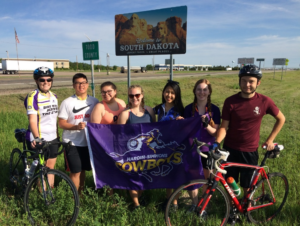
By the next morning, the skies had cleared and conditions were good for our ride to Pierre, South Dakota. Our 65-mile day to Valentine on the previous day meant that the ride to Pierre would be closer to 135 miles—which was not a big deal for the team. The two days from Thedford to Pierre were the two shortest days of the ride. Those were the ideal two days to have a rain delay and a catch-up day on miles. The timing on the rain and our delay was perfect. In fact, the rain from the previous day turned out to be the only day of rain on the entire journey!
We arrived in Pierre in the middle of the afternoon and had time to visit the Capitol building before arriving at Capitol Heights Baptist Church for the evening. We were greeted with dinner and wonderful conversation with our hosts at the church. We had the opportunity to visit with church members at their Wednesday night church service and tell about our experiences on this and earlier rides. A sound night’s sleep, a hearty egg and sausage casserole for breakfast, and a chance to select handmade gifts as souvenirs had us encouraged and ready to roll the next morning to Herreid, South Dakota—just short of the border with North Dakota. We also had the chance to visit with a reporter from the local newspaper.
The road to Herreid had a section outside of Pierre where the shoulders were narrow with rumble strips and unsafe for cycling with support vehicles. We lamented at not having a trail bike for that section—we could have ridden on the dirt and gravel shoulder next to the pavement. However, once the shoulder came back, we were back on our road bikes and heading north. We were welcomed to Herreid in the middle of the afternoon by members and staff of Herreid Baptist Church. Showers, bike repairs, dinner, a visit to an ice cream shop, and a visit with a newspaper reporter made for an enjoyable and restful stay in Herreid. Discovering that the pastor’s wife grew up in Kenya with a friend and former student from Hardin-Simmons University was a fun and welcome surprise.

On previous BRAT rides, we’ve had opportunities for students to ride as a group the entire day and shoot for 100 miles ridden. The ride from Herreid to Bismarck was the perfect day for such an attempt. The elevation and tailwinds were favorable all day long. Even though Bismarck hit a record high temperature of 101 degrees as we rolled past the city toward the 100 mile mark, the six student cyclists were motivated, hydrated, nourished, and in good enough shape to reach their 100 mile goals. Besides the heat, two flat tires and a section with strong cross-winds were the biggest obstacles of the day. It was extremely rewarding to see the students gain strength, confidence, and technique to conquer a 100-mile day.

First Presbyterian Church provided us with a place to sleep for the night and hometown friends of two of our cyclists, Steve and Laura Adair, had us to their house for dinner and conversation. They also introduced us to Bearscat Bakehouse donuts for breakfast (look them up). As we packed up and began the day’s ride to Minot, we realized that we were on the next-to-last day of cycling. The end seemed to be getting close.
The ride to Minot began 20 miles north of Bismarck—the place where we had stopped the day before so that the riders could get their 100 miles for the day. The favorable winds of the previous day were not as helpful on the way to Minot. With miles from Bismarck to Minot earned the previous day, we had a shorter ride than originally planned. We arrived in Minot early enough in the afternoon to visit the Scandinavian Heritage Park before heading to Cross Roads Baptist Church.
As we pulled into the parking lot of the church in Minot, the front tire on our Honda Pilot went flat. We could hear the air coming out of the tire once we parked at the church and turned off the engine. Within minutes, the tire was flat. We removed the tire, took it to a nearby tire shop, and quickly had it patched before the tire shop closed. Again, perfect timing and provision.
Once again, the members of the church provided us with a wonderful supper and fun conversation. We had an exciting and restful night at the church knowing that we only had 65 miles to ride to the border. We got an early start that day, which was a Sunday, so that we were cleaned up and cleared out before people started arriving for church.

We made it to Westhope, North Dakota around 11 a.m. on the final day of riding. A quick stop and rest break at a convenience store had us ready to roll on to the final push to the border. We arrived at the border around 11:30 a.m. and introduced ourselves to the border patrol agents. They allowed us to walk through the checkpoint and take pictures at the international boundary marker between the U.S. and Canada checkpoints. The dreaming, planning, training, and work of the almost three-week ride had all come to a conclusion. In an almost surreal celebration, we took pictures, made videos, posted SnapChat and Instagram postings for followers of our university, and tried to soak in everything that we had accomplished.

After 30 minutes at the border, we packed up our bicycles, put away our vehicle safety and warning signs, and began the long drive back home. After a quick stop in Bismarck at Fuddruckers for a celebratory lunch we drove back across North Dakota to Herreid Baptist Church for a night’s rest, where we were once again fed and hosted by Andrew and Sheila and Tim and Abby, on the way home. A 13-hour drive on the following day took us to Garden City, Kansas for the night. The following morning, we stopped in Liberal for donuts and reached the Texas border by mid-morning.
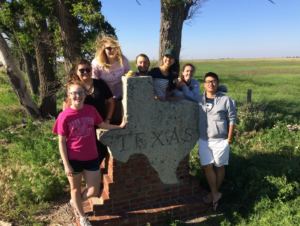
The team arrived back on campus at 1:30 p.m. on Tuesday, May 13th. We were welcomed back to campus by a group of faculty and staff and a reporter from our local newspaper. We ended the ride with only eight flat tires on the bicycles, zero wrecks or tumbles, 40 minutes of rain, 15 days on bicycles, and met dozens of new friends who fed and cared for us along the route. If the scope of the ride wasn’t apparent during the days on bicycles, it was certainly evident as we traveled nearly 25 hours back along the route on the way home to Abilene.
The team arrived back on campus at 1:30 p.m. on Tuesday, May 13th. We were welcomed back to campus by a group of faculty and staff and a reporter from our local newspaper. We ended the ride with only eight flat tires on the bicycles, zero wrecks or tumbles, 40 minutes of rain, 15 days on bicycles, and met dozens of new friends who fed and cared for us along the route. If the scope of the ride wasn’t apparent during the days on bicycles, it was certainly evident as we traveled nearly 25 hours back along the route on the way home to Abilene.

As discovered on previous rides, the country is full of kind, caring, and gracious people. We received only wishes of safety and goodwill along the entire route. We appreciated friendly honks from drivers, cars and trucks that would slow down and change lanes to go around us while on the road, and the countless numbers of people along the route in gas stations and restaurants who were genuinely interested in our ride and wished us safe travels. Strangers and police officers pulled off the road to check our safety and to make sure that we had water and supplies for the ride. Our nightly hosts were gracious beyond measure—they welcomed us into their homes and churches to feed and shelter us throughout the ride.
Biketown, our local bicycle shop in Abilene, provided us with the gear and supplies needed to power the team through the entire adventure. Our university helped us succeed with the use of a Chevy Suburban and supplied all of our t-shirts. Steamboat Cycling Club in Abilene provided support and encouragement to our team throughout the journey. Our supporters checked in with us each day through our Facebook group and kept us in their thoughts and prayers along the entire journey. It was a tremendous adventure from beginning to end. We’re already scheming about next year’s ride…
The successful completion of the Mexico-to-Canada bike ride was a team effort. We couldn’t have completed the ride without the prayers and support of all of our friends and families and those who helped us along the way. To learn more about the ride and to see more pictures and videos from the entire journey, check out some of the following links.
Daily video compilation: https://youtu.be/SBjTza97PSA
GoPro video from ride: https://youtu.be/hsEHEXBSw_E
Photo video from ride: https://youtu.be/RJUTJVP0FlE
Bike Ride Across Texas website: http://bikerideacrosstexas.com/
BRAT5 Facebook group: https://www.facebook.com/groups/BRAT5/
HSU Leadership Studies Program Facebook page: https://www.facebook.com/HSULeadership/

 [/one_third_last]
[/one_third_last]

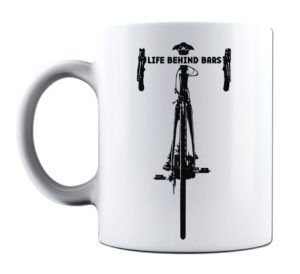



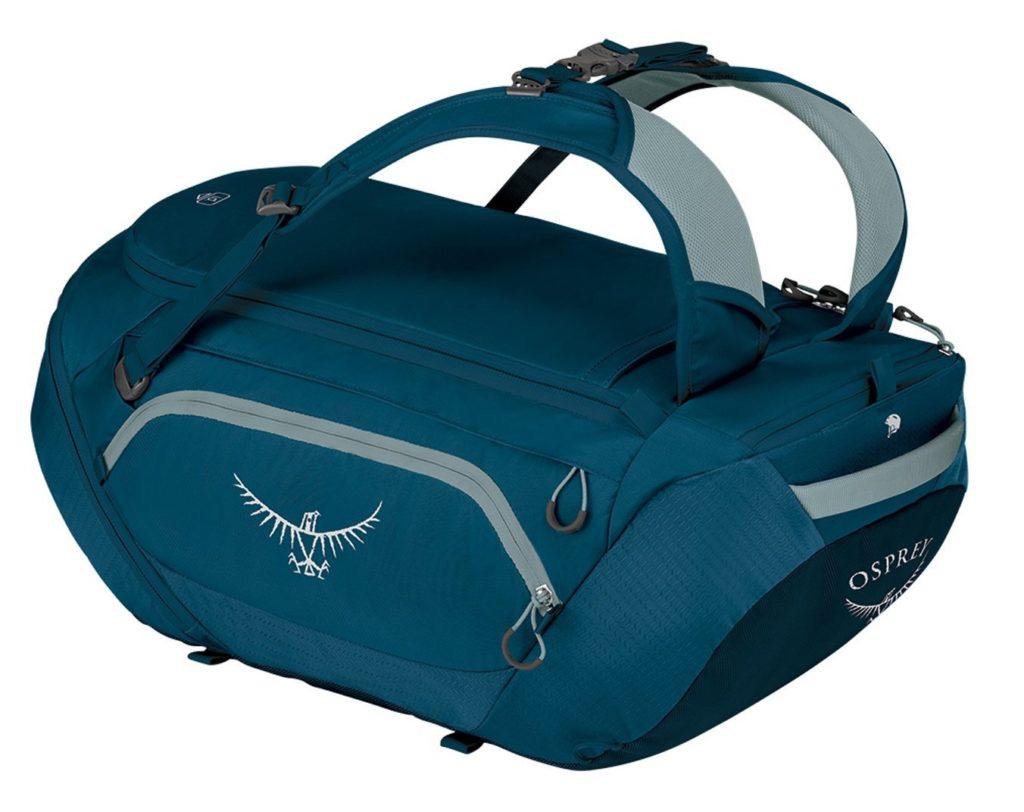



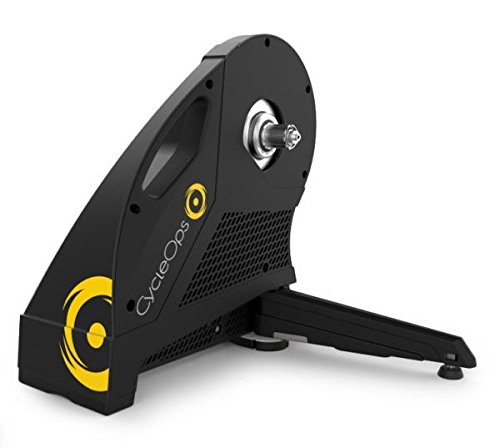

 [/one_half]
[/one_half] [/one_half_last]
[/one_half_last] [/one_half]
[/one_half] [/one_half_last]
[/one_half_last]


